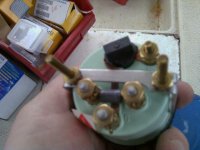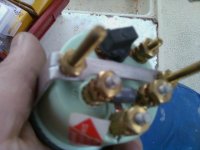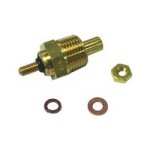Thankyou for the replies. I have some further questions:
1. I connection - to ignition - is the ignition switch connection marked in any way.
2. Should the sender be screwed into one of the predrilled holes in the cylinder head (I have already used one for water pressure)
3. Does anyone know the P/N for the sender - gladly for not original BRP parts as well.
Use a 12v tester or trace from another gauge to the ignition sw.
Yes you can use one of the pre-drill holes on the Block
West marine or search the internet for temp sender I can't remember the correct size..
I will match the sender to the brand of gauge if you can ..here is why
In the 1920s, it was discovered that the current through an ideal resistor actually has statistical fluctuations, which depend on temperature, even when voltage and resistance are exactly constant; this fluctuation, now known as
Johnson–Nyquist noise, is due to the discrete nature of charge. This thermal effect implies that measurements of current and voltage that are taken over sufficiently short periods of time will yield ratios of V/I that fluctuate from the value of R implied by the time average or
ensemble average of the measured current; Ohm's law remains correct for the average current, in the case of ordinary resistive materials.
Ohm's work long preceded
Maxwell's equations and any understanding of frequency-dependent effects in AC circuits. Modern developments in electromagnetic theory and circuit theory do not contradict Ohm's law when they are evaluated within the appropriate limits.





